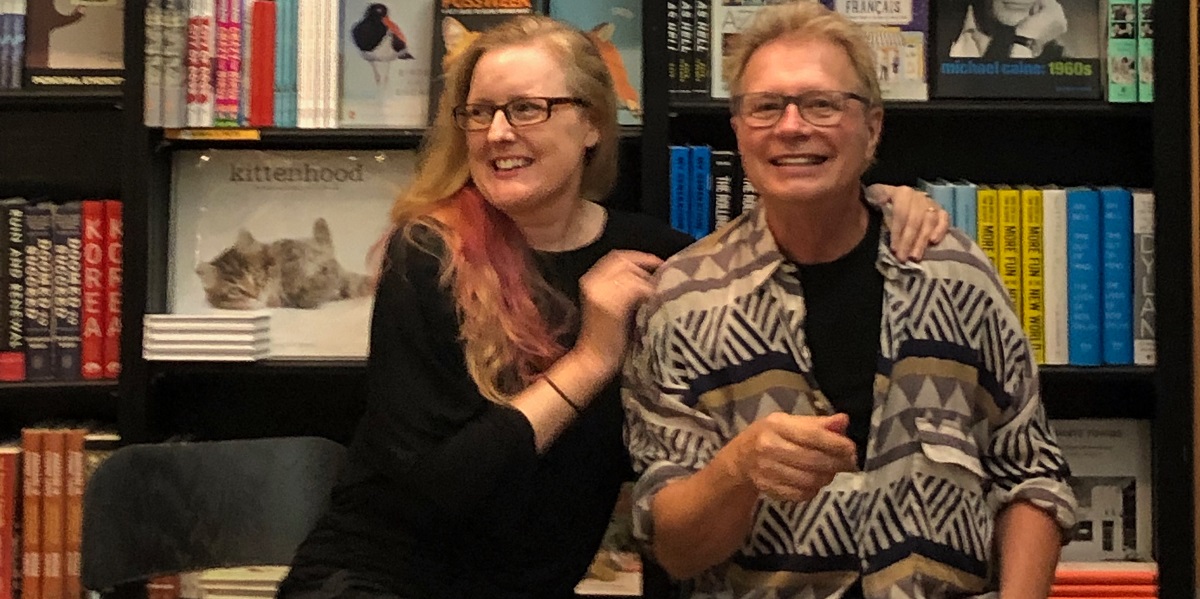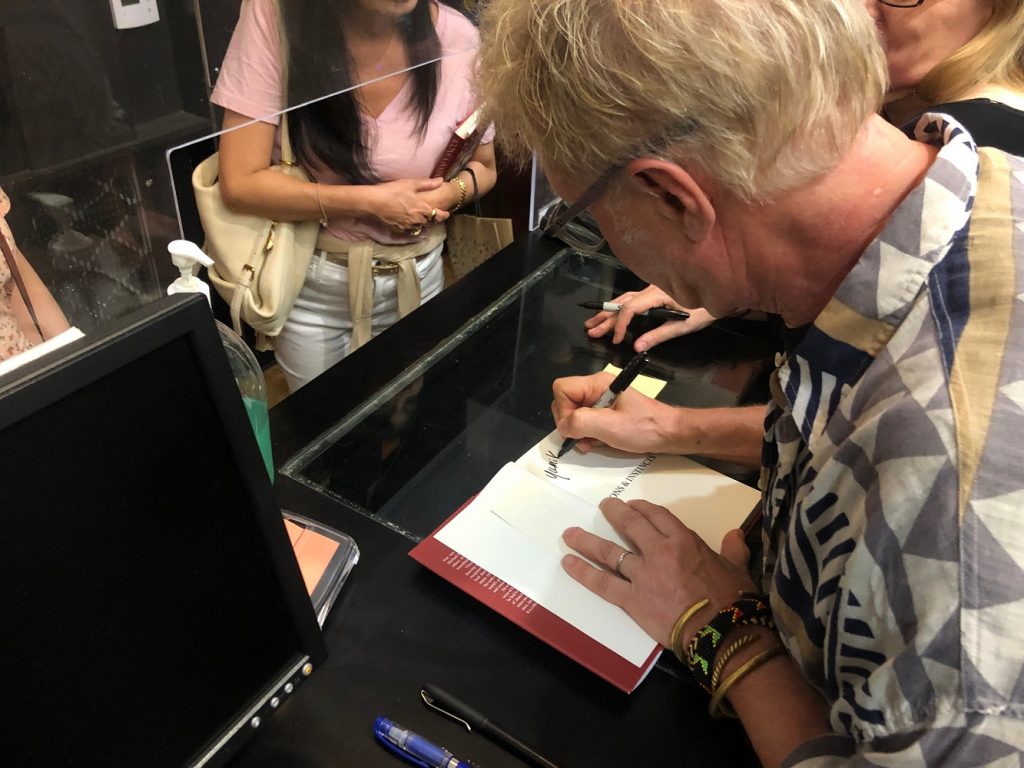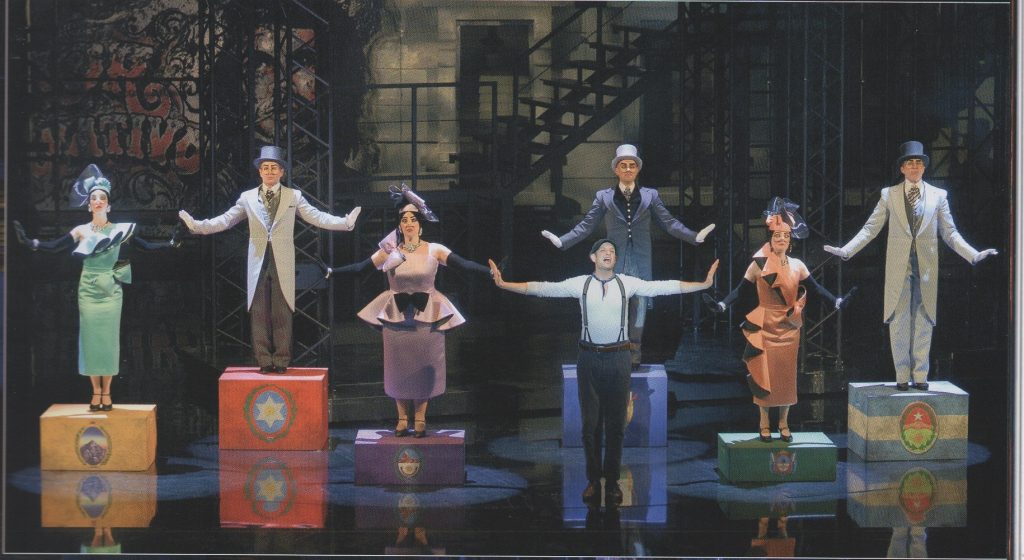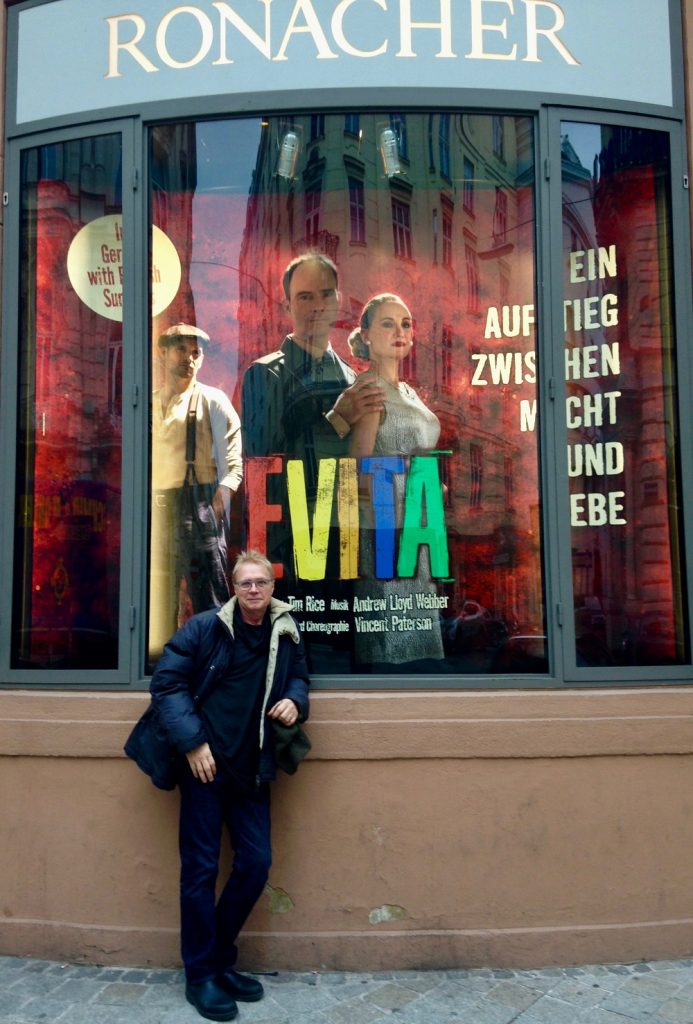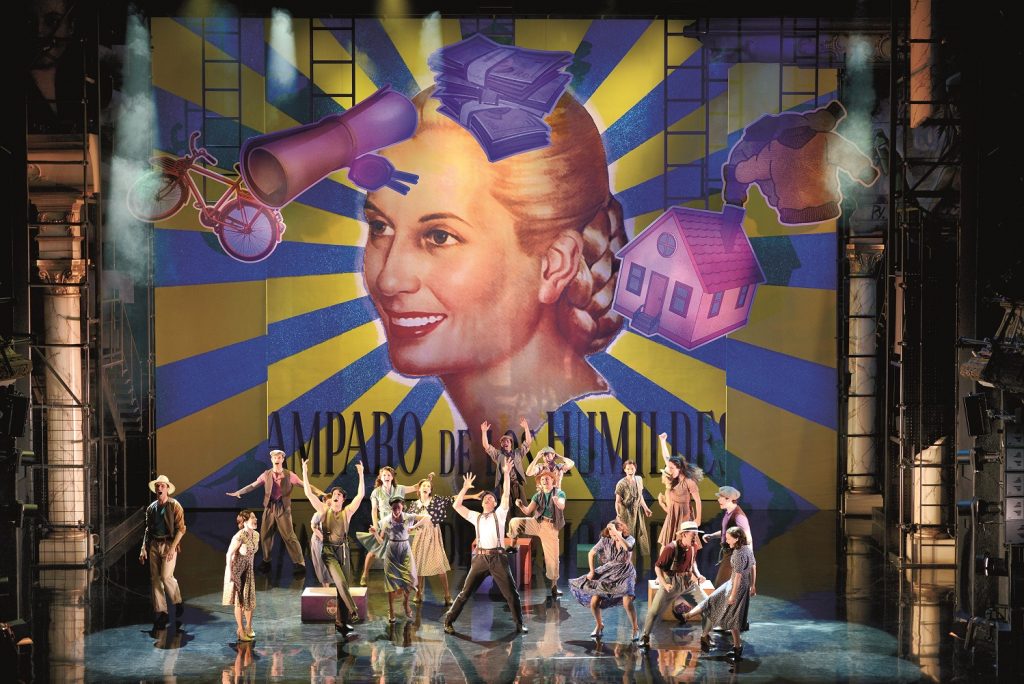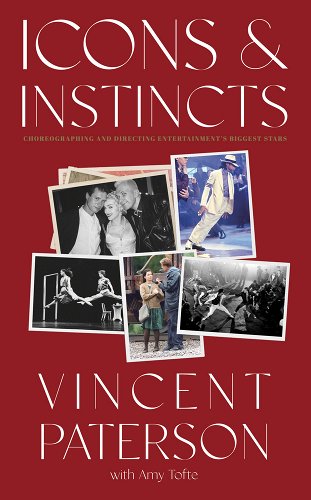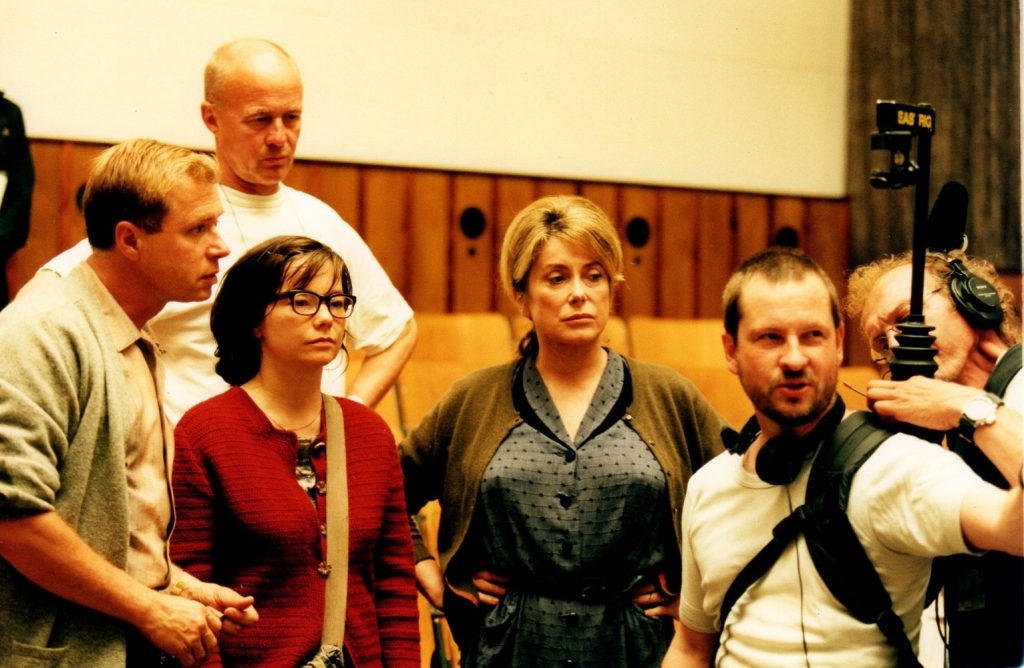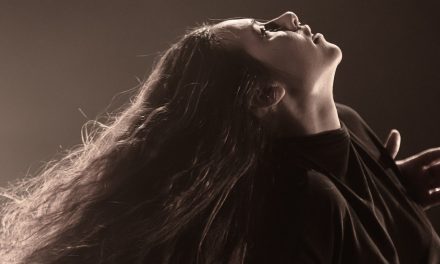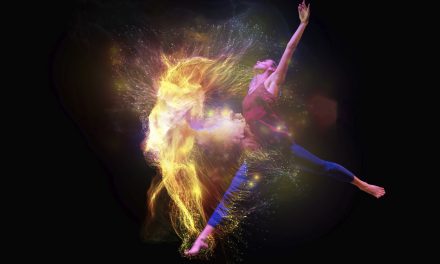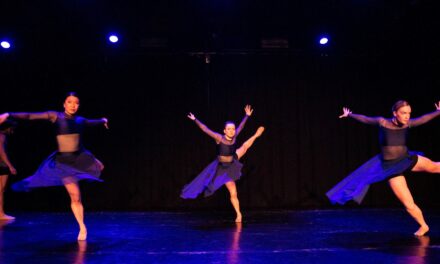“Icons And Instincts” Vincent Paterson’s just released autobiography, written with Amy Tofte, is a must read for anyone in the dance/theater world. His craftsmanship in creating shows for pop stars, Michael Jackson and Madonna left an indelible imprint on all of us and changed the touring culture forevermore. One of the most important director/choreographers of his generation this is “Part Two” of a two part series. In this interview we discuss creativity, instincts and what a choreographer brings to any production. He brings to light the issue of copyrighting and the need to organize. And he tells us about a show catastrophe and how he managed to surmount the odds and turn it into a smash hit. All this and a hint about what is next for this prolific artist.
For a link to “Part One” please click here.
TW – I’d like to ask you a bit of an esoteric question. In your book you talk about both creativity and instincts and I’d like to know how you differentiate between these two. Is it instincts or is it creativity or are they linked?
VP – Well, they are intricately tied together; instinct is a voice whereas creativity is a sensation. I can hear the voice of instinct. People ask, “What do you mean the voice?” Say you have a glass of water and you’re hurried and you set it down on the edge of a table and the voice inside your head says, “Don’t leave that there, you’re going to knock it over!” But you just ignore it and you turn around and BAM you knock the glass over. That’s what I’m talking about, that little voice inside that guides us. Creativity is a feeling that gives you goose bumps when you’re right and causes your heart to sing when things are happening and you’re turned on to it. Or it can give you frustration and halt your process if you’re not connected. Creativity is like putting my finger into the electric socket of inspiration Instinct is what guides one down a path and creativity is what you use when you’ve reached that destination.
TW – Yeah, really interesting. I’m wondering if you had this kind of experience? Sometimes I would go into the studio to work out the choreography and if it were a good day I would become so involved, it was as if I went into an alternate state. When I “woke up” a couple of hours would have gone by and I would have gotten work done and usually that work was good. Did this happen to you?
VP – Oh sure, absolutely and that to me is creativity, the decision that you made to take the job is instinct, is this right for me or not. But once you say yes and you get into the studio and start to play that’s creativity.
TW – Yeah, that makes a lot of sense. Of course, I did take a lot of jobs because I needed the money.
VP – Oh, Didn’t we all!
TW – With Madonna and Michael Jackson you did a lot of groundbreaking and much copied work. We can refer to the Michael Jackson “Lean” from “Smooth Criminal” for example along with “Vogue.” Though this movement existed in the underground world it was unknown in general entertainment and you brought it above ground to wider audiences through Madonna’s “Blond Ambition Tour” Your work has been copied all over the world thousands if not millions of times, some of it with your permission and a lot of it without.
VP – Mostly without.
TW – Yes, that’s why I wanted to ask you to speak to this issue, among others, for working choreographers and how creating a union is essential in the fight for parity.
VP – Well, I’ve been working for over three decades to rectify this situation, to obtain equality for choreographers in the workplace on the West Coast. I’m talking about choreographers who work in the Electronic Medium–films, commercials, music videos, promos, and television, as well as those working in live non-theatrical performing arts such as Pop Tours, fashion shows, industrials etc. During the pandemic, a group of younger choreographers invited me to join them in their Saturday conversations. They voiced their frustrations that were the same frustrations that other choreographers and I have experienced since the 80’s. Through a long, diligent process we created the CG, the Choreographers Guild. Kat Burns is the President. There are four Vice Presidents, a Secretary-Treasurer and an Executive Director, Steve Sidawi. There is an executive board of forty major choreographers including Kenny Ortega, Anita Mann and I on the more mature end, to Derek Hough, Brian Friedman, and Kyle Hanagami and other younger choreographers. The point is to establish a union for choreographers who work in these mediums to specifically get pension, health and welfare and credit, and some kind of ownership of our work, because, as choreographers, we’ve had to give up the ownership of, or work under a “work for hire” contract. Meaning we own nothing. People ask, “Well can’t you copyright it?” Yeah, you can copyright it, but you don’t own it. Anybody can exploit it and they do. If we can get a majority of choreographers on the West coast to become part of this Guild, I think we are in a position to be able to make some big changes.
TW – What do you do about the age old problem of making sure that if a job is turned down because the producers will not honor the union rules that someone maybe less experienced, hungrier, needier etc. doesn’t step in and take the job, union or no union?
VP – Well, that is a huge issue and that happens anytime any union is trying to negotiate and make some forward movement. And those people who cross that line are scabs. What must happen are two things, first, a really solid campaign to get the most important working choreographers, to become involved and become Guild members. Second is to educate. Once you have a guild you have the clout to say, I’d like to do a referendum or a conference with the Directors Guild or the Producers Guild of America, so we can educate others as to what choreographers actually do. Many people have no idea of the versatility that we bring to any project.
TW – I agree completely.
VP – They just think we make up steps. They don’t know that we are responsible for even the smallest bit of movement or physical style in many creative situations. So I think education is the next big activity on our list. There are those exceptions, of course, those wonderful directors I’ve had the great opportunity to work with directors who respect you, admit that they don’t know everything and ask you to let them know where movement or choreography might be needed. Directors like Mike Nichols, Lars Von Trier and Joe Pytka, among others.
TW – Yes, these are all really intriguing stories that you tell in detail in your book. I was especially interested in Mike Nichols because I had just read his biography.
VP – By Mark Harris?
TW – Yes.
VP – Well, one of the exact reasons and a perfect example of why we need a guild. When Harris wrote a chapter on “The Birdcage” he stated, “one of the most interesting improvisations that Robin Williams ever did was the “Eclectic Celebration Of The Dance.” Now, Tam, even though I have main title credit, Mark did not bother to contact me to see if I was involved with that piece. He just decided that Robin had created this “dance” through improvisation, which he did not. Yet, he didn’t bother to find the truth and he wrote me out of history.
TW – I only knew about that after I read the book but it’s really an unconscionable omission. And I’m not at all surprised that a choreographer created the “dance improvisation” because there’s just too much specific detail that a non-dancer would not know.
VP – Absolutely.
TW – Did you write to Mark Harris or get any satisfaction from him?
VP – From Mark Harris? No. The Huffington Post had done a review of Harris’ book and the reviewer stated in the article that he “Agreed that this was one of Robin Williams greatest improvisations.” I wrote to him and he printed a retraction.
TW – Nice.
VP – I did try to contact Mark Harris and I tried to contact Tony Kushner, who is Mark Harris’ husband and also friends who know them both and I never got a reply.
TW – Perhaps this is another example of how the Union could have impact in the future.
VP – Absolutely. This goes back to education. So many people do not know what we can do. It’s only a perceptive Director or someone whose ego is in a very healthy place and who is not concerned that the choreographer is going to take over their job.
TW – A lot of control issues………
VP – Ego up the whazoo as my grandmother used to say. (Laughing) However, I’ve been fortunate enough that those kinds of people have been few and far between in my career. The majority, the great majority, has not been like that at all, whether they were celebrities, directors or producers. Perhaps because I was fortunate enough to do work that was so visible during the Michael Jackson and Madonna era, it gave me a lot of clout.
TW – As it should have. So now, I would like to talk about the book. There are a lot of very accomplished people who’ve had tremendous careers and interesting lives, but they do not write a book. I’m curious as to what compelled you to get it down on paper.
VP – My co-writer Amy Tofte, who is a playwright, a screenwriter and a journalist, gave me the impetus to even think about writing a book. I was directing one of her plays and a documentary that was done about me, by a Swedish documentarian called “The Man Behind The Throne” was being shown at LACMA and she went to see it. Afterwards she said, “You need to write a book. Have you ever written anything?” I said, “When I would work around the world, I would write journals. When I’d get home, I’d give them to a few friends. Some were maybe 250 pages long.” I gave Amy a couple of these to read and she said, “You can write.” I said, “If you’ll do it with me, I’ll do it.” So, she came on board. We loved the style of the journals and I wanted to stay true to that voice. We wanted the reader to feel like they were sitting across the table from me.
TW – So that it sounds like you.
VP – Exactly. Amy was really wonderful in being able to keep that voice in the sections I had not written about. She would interview me and then we worked together to keep the stories in that same style. I wanted to write the book for a few reasons. One, people enjoy knowing what celebrities are like during the work process. I’ve had such good times with so many celebrities that I wanted to let people know how they worked under pressure, or in collaboration with me—whether it was a celebrity, or an actor, or director, dancer or singer.
TW – Of course.
VP – The second reason is something we’ve already talked about, being prepared. I wanted to show how I work to be prepared for any opportunity that comes across my path. To let young artists know that preparation is a big key to success. You never know what will be behind the next door or around the next corner so be ready for it. If you’re a performer then don’t just be an actor, take a dance class, take a vocal class, who knows what opportunities might come your way.
The third reason was, I’ve met many people who thought that everything just fell into place for me, that it was all so easy. It wasn’t always easy. I wanted to share that, even when it’s not easy, stay committed, follow your heart, listen to your instincts and go for it. Ultimately it comes down to you. Find that strength, if this is what your life is about, if this is what your journey is about, if this means that much to you go for it, go for it! Do everything you can to get there. If you keep hitting your head against a wall, and it’s not working, take a step back and see how you can use all the information that you’ve gathered, all this knowledge and put it into something else that can still give you great, great joy.
TW – I like the idea that sometimes it’s important to take a step back and look at your options. In that way you may be able to avoid desperation, which never gets you the job.
VP – Yes, we have options.
TW – I read in an interview that you mention the idea of being “Nice.”
VP – Well, when I was first stepping into the role of choreographer, I may have carried some of that “bad choreographer” style that we learned from those choreographers who came from a generation where they could be dictators. We highly regarded many of these choreographers but at the same time we could recognize that they were difficult people to work with.
TW – And sometimes just plain mean.
VP – Yes, mean, absolutely mean. So I realized, thank heavens that this wasn’t the way to work. I didn’t need to be a dictator; I could be a nice guy. That’s when things started changing for me a lot in my process. My eyes opened to the awareness that everybody is so vulnerable, not just me, as an insecure choreographer. I think I tried to act strong so that everyone would think I had it altogether when I was totally insecure. When you realize that everybody is putting themselves on the line, whether it’s Madonna or the background dancers and you’re in a position of authority, what is the point of not being a nice person? What is the point in not trying to create a kind of family where everybody feels free to make some mistakes in the rehearsal process, to experiment and to fall down and be able to get back up? Where it’s really paid off for me is when I direct. As a director especially for big musicals that I’ve directed around the world, I’ll hang out with the ladies in the costume shop, have a coffee and get to know them. Or I’ll go to the guys building the sets and say, “Hey man, can I help you?” I get to know their first names and selfishly, it works incredibly for me as a director, because when you give people respect, when you’re nice to them, they will work their butts off for you. They realize that you respect their artistry. The byproduct of treating people with respect is that everyone does a better job.
TW – And it makes for a better experience for you.
VP – For everybody, because, as you know, every project has snags. The more you can create a family where you’re all working together the harder they’ll work for you when these problems come up.
Let me give you and example of a major snag. About 5 years ago I directed the musical “Evita” at the Ronacher Theater in Vienna. I worked with the musical director a year before we began rehearsals. He said to me “we can create this show by selecting arrangements from many different versions of the show. We can use the original Patti LuPone version. We can use the Ricky Martin, we can use the film version, so let’s go through and you decide what you like best.” We did. I directed the show, I choreographed the show and we put the show up. Now, we’re in previews and the Andrew Lloyd Weber people show up; we have a meeting after the show and they say, “You cannot do this show. You are only licensed to do the Ricky Martin version of the show.” Tam, we had three previews left before opening night. Entire pieces were now chopped in half, or other arrangements had to be added which involved changing choreography, blocking, sets, costumes, lighting—so much had to be changed radically in three days. I met with the actors and explained the situation. The actor who was playing Che got up to walk out of the room. I said, “ I want to tell everybody, if you don’t feel that you’re a good enough actor, that you can’t adjust to these changes in a short period of time, then leave, because I have understudies for all of you and those people who really want to do it and will prove that they can do it, those are the people who will be onstage on opening night. We can do this.” Nobody left. Working with love, creating a family who supports each other can make or break a production.
TW – What a nightmare. I know from experience how one small change creates a domino effect, so such extensive changes had to be overwhelming.
VP – An absolute nightmare
TW – But it was successful wasn’t it?
VP – Very successful, our six-week run became a seven-month run.
TW – We’re about to wrap up but before we do I’d like to ask you what’s next for you?
VP – I’ll be directing an original musical, a fantastic adventure piece that combines martial arts and female power. We have the financial backing to do a major presentation in London after the first of the year. I’m keeping my fingers crossed. I’m keeping everything crossed.
TW – I’ll keep my fingers crossed for you too. This has been a fascinating conversation Vincent, thank you so much.
VP—My book, “Icons & Instincts” is available on Amazon.com. Thank you, Tam.
To view Vincent’s interview with Director Brazil click HERE.
To visit Vincent Paterson’s website, please click HERE.
To read Part One of Ms. Warner’s interview with Vincent Paterson, please click HERE.
Written by Tam Warner for LA Dance Chronicle.
Featured image: Amy Tofte and Vincent Paterson at book signing – Photo courtesy of the author.

